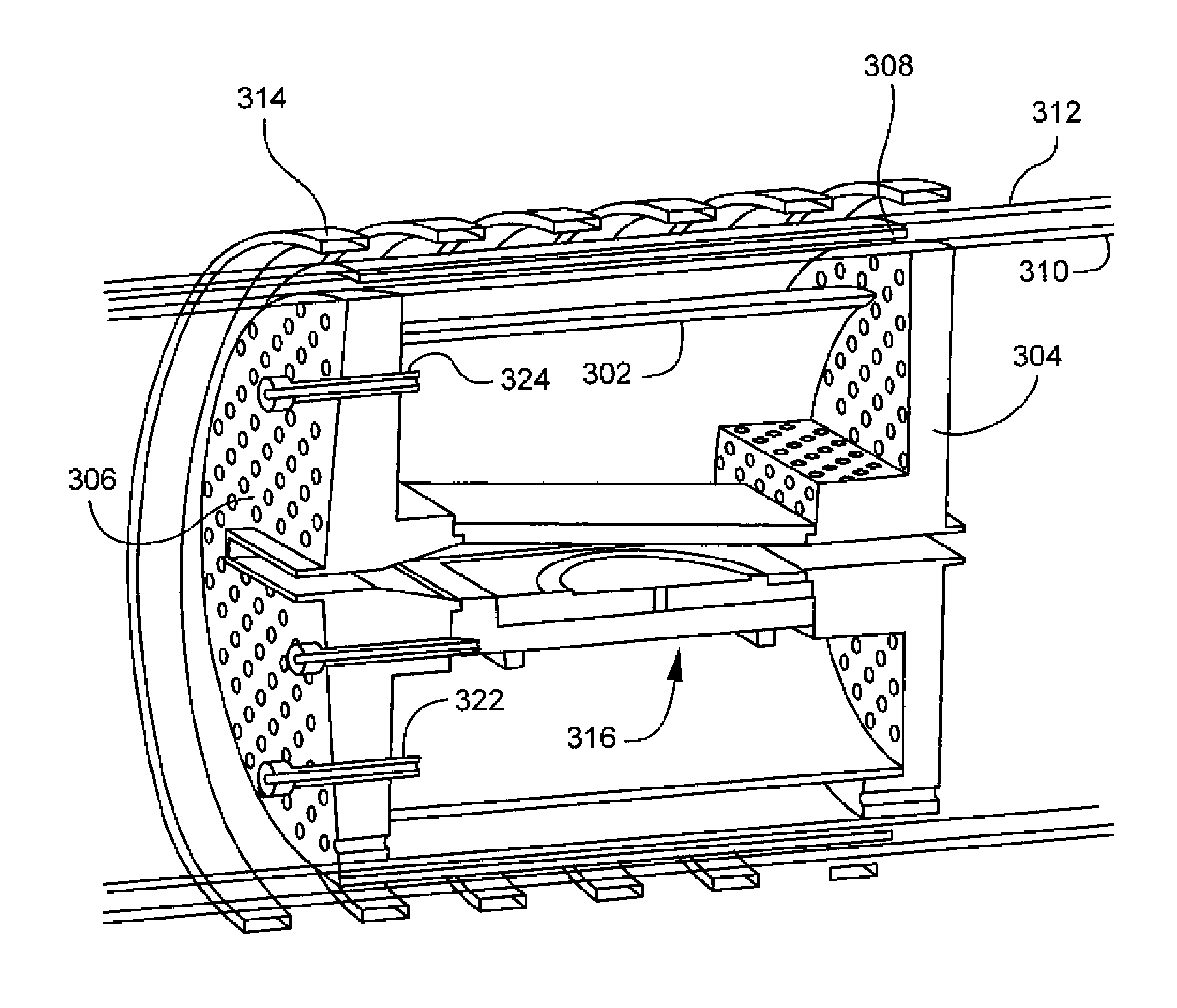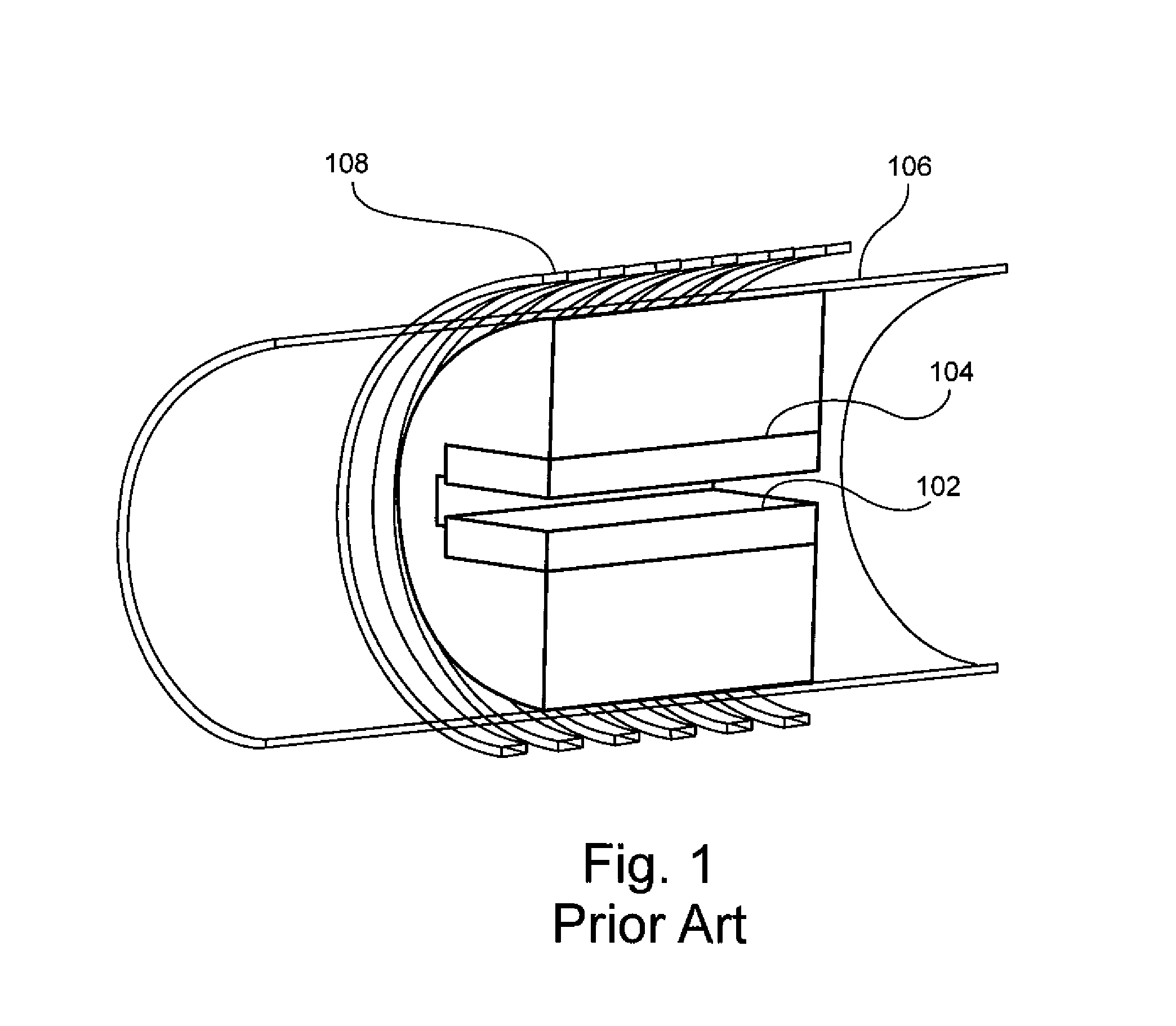Epitaxial growth system for fast heating and cooling
a growth system and silicon carbide technology, applied in the direction of crystal growth process, polycrystalline material growth, chemically reactive gas growth, etc., can solve the problems of silicon carbide epitaxy at very high temperatures, difficult to achieve, and insulation generally increases the time necessary to heat up and cool down the system, so as to reduce or eliminate the amount of heat, the effect of quick and efficient heating of the system
- Summary
- Abstract
- Description
- Claims
- Application Information
AI Technical Summary
Benefits of technology
Problems solved by technology
Method used
Image
Examples
Embodiment Construction
[0019]Systems and methods of crystal growth, such as epitaxial growth, are disclosed herein. The disclosed systems and methods may provide faster heating and cooling phases as desired before, during and after crystal growth.
[0020]A susceptor of the type depicted in FIG. 2 is suitable for use in a quick heating and cooling system because it maintains a uniform and reasonably close distance to the coil. Except for the insulation, as shown in FIG. 2, heat-up and cool-down can be made reasonably fast in this configuration. Without any insulation the radiative losses at 1600° C. are prohibitive. Therefore, some type of insulation is needed. In an illustrative embodiment of the invention, a non-conducting reflective shield is placed in a fluid-cooled jacket. Currently, the most practical fluid to use is water. The reflective shield with jacket is disposed between the coil and heating tube.
[0021]FIG. 3 depicts a susceptor assembly with a fluid-cooled jacket according to an illustrative emb...
PUM
| Property | Measurement | Unit |
|---|---|---|
| temperatures | aaaaa | aaaaa |
| temperature | aaaaa | aaaaa |
| area | aaaaa | aaaaa |
Abstract
Description
Claims
Application Information
 Login to View More
Login to View More - R&D
- Intellectual Property
- Life Sciences
- Materials
- Tech Scout
- Unparalleled Data Quality
- Higher Quality Content
- 60% Fewer Hallucinations
Browse by: Latest US Patents, China's latest patents, Technical Efficacy Thesaurus, Application Domain, Technology Topic, Popular Technical Reports.
© 2025 PatSnap. All rights reserved.Legal|Privacy policy|Modern Slavery Act Transparency Statement|Sitemap|About US| Contact US: help@patsnap.com



